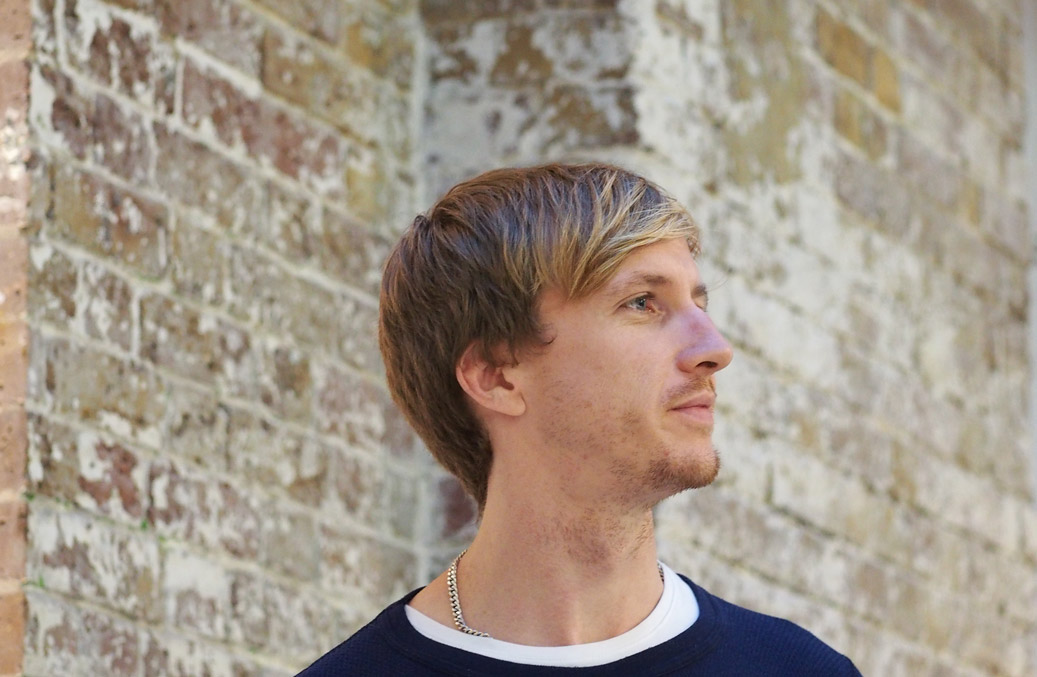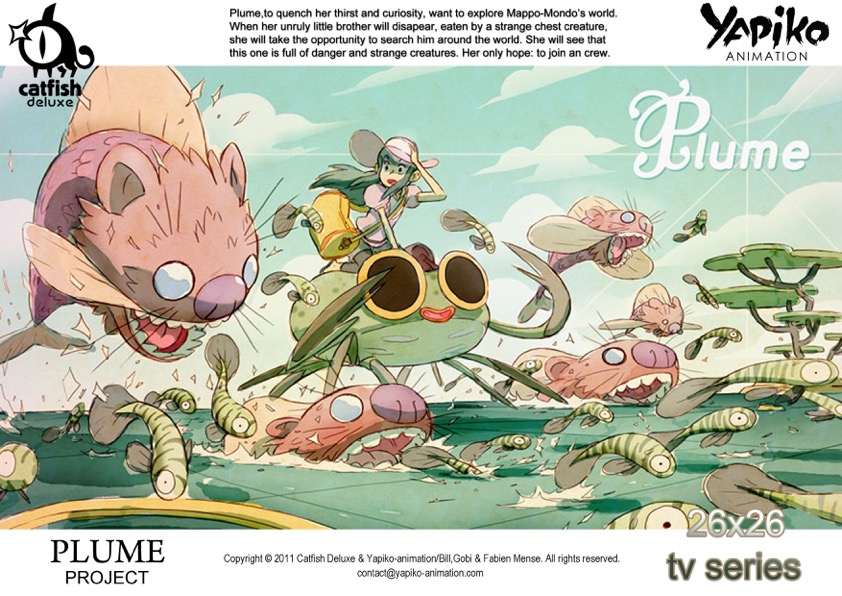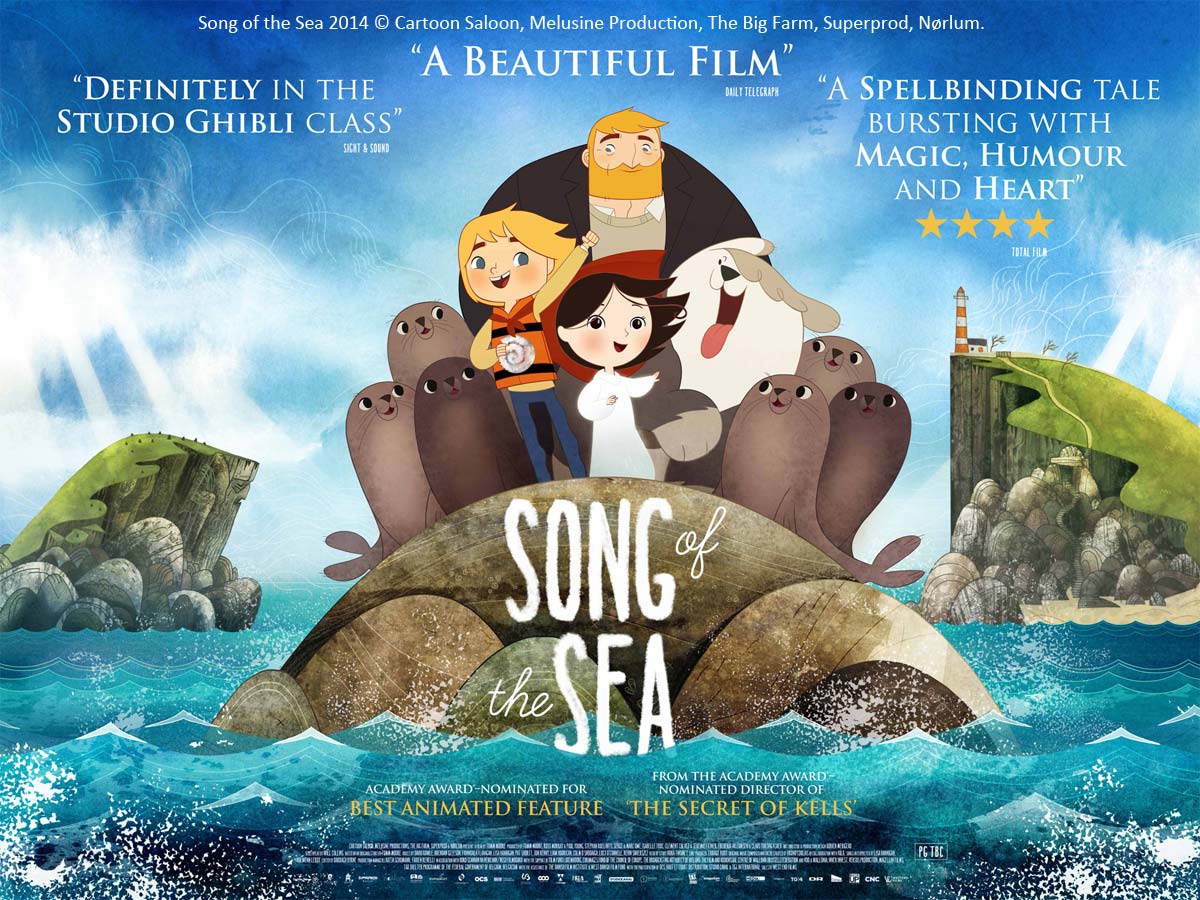
Animationweek editorial team had an interview with Drifa Benseghir, a professional 3D character animator and lecturer at Gobelins, l’école de l’image, Supinfocom and The Animation Workshop. It is our great honour to be able to share her knowledge, expertise, and broad international experience with you.
Starting as an animator
Animationweek (AW): Could you please tell us a little bit about you? What is your expertise?

Drifa Benseghir: I’m a 3D character animator. I’ve been working with Maya® since around 2002. I was a big fan of animation. Drawing was my hobby. I was drawing all the time for my pleasure and to create universes. It made me feel really good. I was a really big fan of Japanese animation. Because of this background, I had a lot of expertise in animation, more Japanese than American. I’m also very interested in Disney animations. I started working as a 3D character animator in 1997 for the biggest video game company in France, I think it still is. The company is called Ubisoft® (∗1). I was very lucky. To be honest, I didn’t have any education in animation or computers. My formal education was in Japanese language and civilization. With a big coincidence, I found my first job as an animator without any experience or education in this field. All I had was my passion for this world.
∗1: Ubisoft Entertainment S.A. (https://www.ubisoft.com/en-GB/) is a video game developer and publisher in France. Their major titles include the Assassin’s Creed series and Rayman</i series.
The first job in Ubisoft®
AW: How did you get the chance?
Drifa Benseghir: I found this ad from Ubisoft® in a French newspaper, in February 1997. They were looking for “professionals of movement”. That’s how it was described in the ad. There was nothing written about animation. It was saying something like “if you have any interests in learning a 3D program and have some skills in animation, we are willing to do training”. A lot of people from different backgrounds applied. It was a long succession of tests.
The first was to send something like a book or a portfolio with drawings to show your skills. Fortunately, I had sketches I had done while watching films like Akira or Nausicaä. At home, we had a good videotape player that could “pause” on images. That’s how I was sketching back then. In 1997, Nausicaä was not famous at all by the mainstream public in France. The guys who looked at my portfolio were previous students from Gobelins(∗2) and they knew about Hayao Miyazaki. They were very intrigued by my drawings and thought “who is that girl who draws sketches from Akira and Miyazaki’s movies!? It’s interesting”. Again, in 1997, very few people knew of Miyazaki’s movies, even in the industry. All eyes were turned on the other side of the planet, towards Disney animation. Lion King at that time made one of the biggest successes ever in the history of animation. Studio Ghibli’s movies were considered very “underground”. Anyway, they called me for an interview. This was the first test.
∗2: Gobelins, l’école de l’image (http://www.gobelins.fr/en) is an art school in France, which has a high reputation for its animation course.
AW:Then, what was next?
Drifa Benseghir: After the interview, I had to do the animation tests. It was my first time in my life using a 3D program, even a computer. I was very thrilled with the challenge. I thought it was an amazing opportunity. I jumped into this new world even if I didn’t know how “to swim”. After many tests and interviews, the last interview was with the big boss of the company. Then finally I got the job as a trainee and junior animator. I found myself in a team of animators with mainly recent graduates from Gobelins and also some professionals who had great experience. It was not only animators. There was a guy who was a mime. He was very comfortable with motions. He could really do animation as he wanted with the 3D program. All the people I met at that time were a great inspiration for me and I am very grateful I met such amazing people. That was my first experience.

Being in the state of quest
Drifa Benseghir: Since then, with all the help I got from the colleagues I met at Ubisoft®, I could continue to work in this industry. And during all this time, I have been self-taught. Always teaching myself by asking my surroundings “how do you do that and how do you do this?”. I’ve always been in the state of quest. I was always challenging myself to become better and better. It was not a competition. I was not thinking “how could I do better than the others?”. It was never my goal. My goal was to become the best I could become, day by day. It’s a very personal approach. I always felt a little behind everybody else because I didn’t go to an animation school. It was a little complex I had and I still have it sometimes. From the first job, you meet your first colleagues and become friends and you start to have connections and this is how all the rest became filled. It was not easy all the time.
It has now been 18 years that I worked in the industry of 3D animation. It had been in Paris for the first 12 years, then little bit in Scandinavia, Norway until 2010 when I found the first opportunity in Japan to work in an animation studio. In 2010, it was the first time I combined my formal education and my job. I could speak Japanese and work as an animator.
Becoming a teacher
Teaching at Gobelins
AW: Then, could you please let the readers of Animationweek know about your other expertise?
Drifa Benseghir: My other job is teaching character animation with Maya®. This was also a big coincidence. I never really intended to do that. It just happened. At the Gobelins School, they desperately needed urgent help and I was the closest person, I mean geographically. I myself was taking training in the school to learn the other aspects of Maya® as a program: modelling, rigging, texturing and all other aspects of the craft beside the animation. I was attending a professional training course. They had a big crisis. The teacher who supposed to teach the class, gave a very late notice like in the morning of the day he was supposed teach, and said he couldn’t do it anymore. So it was a really big, big crisis for them. A former colleague, who was also there by coincidence recommended me and said “Drifa is here”. And I said “OK, I would help you”. I thought I could help them start their work and I didn’t really think about how I would handle this situation. To be honest, I became panicked the evening before I started. So the next day, I found myself in front of the class of 15 students. I was not so much older than them. I was only 28 years old and some of them were 25 years old. It was kind of weird.
To my big surprise, it was an amazing experience. I found out that I was somebody who was able to teach and explain things in a simple way. Even talking about something difficult to teach like Maya® could be fun and interesting. It was a big surprise to me. It was also a surprise for the school. They were really happy and called me back saying that the students were really happy. So I went back even if I didn’t have such a great CV. I didn’t have a name of a big school or a big studio in my CV but this experience was positive for both sides. So they called me back.
Teaching experience at the Disney animation studio in Paris
Drifa Benseghir: Somehow I got recommended to the Disney animation studio that was in Paris (Montreuil) back then. It was in 2003, they were shutting down the French studio. Before they let all the animators go, they wanted to give them some training of Maya® to give them more chances to find work after. So I also found myself being kind of a teacher of Maya®. I didn’t teach animation because they knew animation better than me. It was an incredible and unforgettable experience for me. They were the ones whom I could learn so much from. I was very humble in front of them and very honoured to share these moments with this team of the great animators from Disney. They were the most talented people I ever met in my life. It was incredibly inspiring.
So I’m a 3D character animator and also a teacher. I started teaching in 2003 so it’s been 12 years now. I’ve been teaching a lot at the Gobelins School and also in Supinfocom (∗3), the biggest CG school in France. Gobelins was for animation and Supinfocom was more for CG and I also teach regularly at The Animation Workshop in Denmark.
∗3: Supinfocom became MOPA (http://en.ecole-mopa.fr) in 2015.
Developing expertise
“Experience is the hardest teacher, it gives you the test first, and the lesson afterwards”
AW: How did you learn and acquire your expertise?
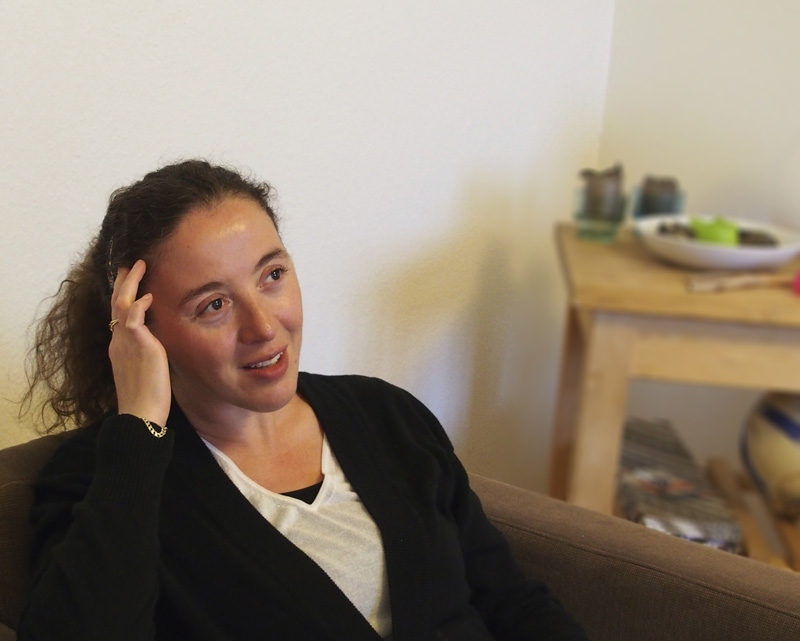
Drifa Benseghir: I learned the hard way… Just by doing. I recently read a quote from Oscar Wilde saying “experience is the hardest teacher, it gives you the test first, and the lesson afterwards”. This is how I have been learning. First is just like “OK, I don’t know how I’m going to do that”. Then do it the best you can, and then after it’s done, I tried to take some time to concentrate and understand how I could make it work better the next time I would be in the same situation. It has always been “do do do do until it works” and “re-do it, re-do it, even if it doesn’t work” and “try again in this way and this way”, “mmmm, doesn’t work”. So it was a lot of experiments and a lot of trials.
I always study by saying myself “I don’t know how to do that. But It’s OK, that’s fine. I’m going to do it anyway. I’m going to do it the best I can”. So the first 5 years were filled with a lot of frustrations, yet a lot of fun too.
It’s also one way that I teach my students. I tell them “first, it’s gonna be frustrating but at the same time very rewarding. Once you find yourself in this state of quest, there’s a lot of happiness “. I don’t teach by saying what to do or how to do something to the students (or at least not immediately). First I give them a challenge and let them find by themselves. Of course, after a little while (it should never be too long) I finally share with them my knowledge and teach them one way to proceed. Of course in a creative job, there can be many, many ways to do something. So I just teach in the same way as I have been taught in my life. If my students can become comfortable with the fact that “you don’t know everything”, but as long as you “do your best”, it will work out, then I’m happy. It will take time and work. But if you do it with dedication, you’ll get there. I think this is going well in my classes.
The 15-minute rule
AW: Who would help you when you have questions and you need help?
Drifa Benseghir: My co-workers. In animation, you always work in a team. I rarely find myself alone. We are always a team. I had chances to work with very talented people who were very generous but in a way, I could not ask for their help all the time. I think it was Alex Williams, who also teaches in The Animation Workshop who came up with the “15 minutes rule”. When you have a problem, you try to fix it by yourself without asking for 15 minutes. After 15 minutes, if you don’t have any solutions, it becomes a waste of time. You may not be on the right track at all and should ask somebody for help. This is something we also teach to our students.
So yes, trying to find the good balance. I sometimes see co-workers and students who ask questions as soon as they have a problem. It’s a pity. I think taking 15 or 20 minutes to search for a solution on your own is a good way to train yourself to solve problems, which you don’t know the solution. It’s a good compromise. After 15-20 minutes when you can’t get there, it’s time to ask. It requires also courage sometimes to ask for help. A lot of people are very shy or just too proud. They want to protect their image and they want to appear professional so maybe they think that asking question is a sign of weakness. So it’s very important as a professional to find a good balance. Trying to do it by yourself but also being honest and saying, “With this, I need help” and ask the right person. Of course, as well as not being afraid to fail, to throw everything away and to start from the beginning.
“Togetherness is a precious and very important thing”
AW: I have a question about the way you learn animation. What do you think the difference between online school and traditional classroom learning is?
Drifa Benseghir: I don’t have an experience of teaching at an online school. I can’t say from my experience. I think online school is really good, too. I don’t have an experience so I can’t compare really. What I heard from my co-workers or students who did online school, is that they miss the energy of being in the same room with other people and you communicate and you live together. You interact. They are missing real interaction.
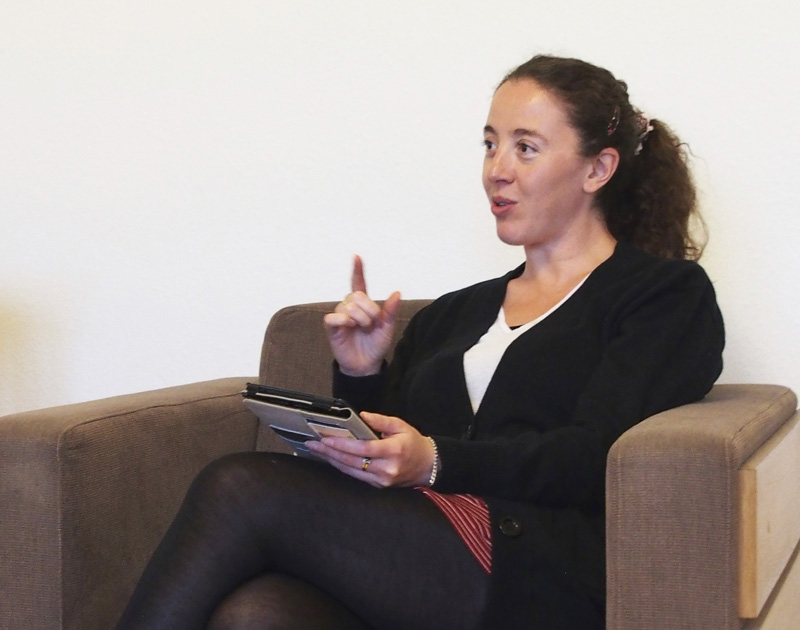
I think those who did online school are missing this interaction and they are a little bit shy about interacting with others when they start working in studio. If I can give an advice, I can give an advice that “if you can, I recommend that you choose a school where you can directly interact with other fellow students”. I’m not talking about interaction with teachers. The most important thing is to be in the same room with other students like you that face the same problem, maybe at the same time, and there is what it’s called a sense of togetherness. For me, togetherness is a precious and very important thing. If you can only learn online, it’s better than nothing. Then, what could be done may be to organise some weekly meetings with animators from your town. You could have a real exchange by meeting other people and have real communication. I think all the animators I met were a little bit regretting that they couldn’t have interaction as much as they wanted. They have a really good level so I’m sure they’ll catch up. I also think it affects your personality when you interact directly. I can see how positive it is to be in the same room for three years together. I really like it and I need it.
Happiness from animation
Animation is magic
AW: Compared to other media, what part of animation is attracting you as a medium and what made you work for animation?
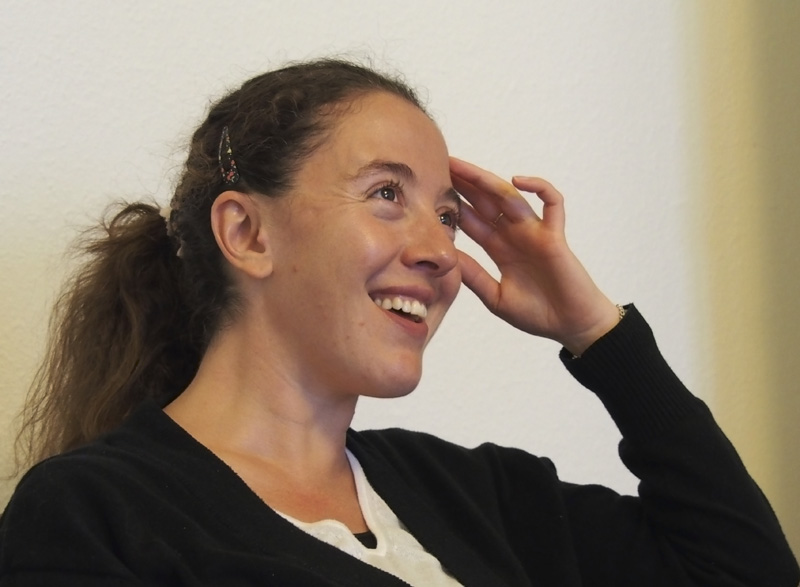
Drifa Benseghir: I love movies. When I was a kid, I really loved watching TV and movies. I also really like music and songs. Music is for me one of the strongest art form, it can really affect me. I also love drawing. I love the fact that you can imagine something and draw it. It’s almost like magic. For me, animation is a perfect medium because it combines the 2 art forms I love: music and drawing. The timing is really close to the music. Actually it’s more the sound. Sound has many powerful aspects that even science is discovering now. It’s a little bit abstract. For me, animation is the best medium to combine drawings and sound and music. That creates magical effects.
When I was kid, I saw Fantasia (1940) by Disney. It had a very intense effect on me. It was not possible to do that with anything else but animation. You couldn’t do a film like that in live action. This magical side of animation that you can combine with fantasy and your imagination, but it’s moving and alive. So I prefer animation to illustration.
I really wanted to become an illustrator or painter, I have hundreds of art books at home that inspired me. For me, it’s a starting point. Illustrations and drawings are starting points. What amazing is to see those illustrations starting to become alive. For the first time, when I saw my animation playing, it looked so alive. It was not like a narcissistic saying. I was feeling really humble at the same time, I was so happy. I still do. I feel good. When I have an idea, I visualise and imagine it. When I get to the point that I finally get what I imagined, it’s such a rewarding and amazing feeling. I think all the animators would agree that we become addicted to this feeling of happiness. We are so happy to create what we have imagined. It’s like a natural high. When we are in a very focused state of mind, it’s like being in outer space. It’s called being in the “zone”. You find yourself in such an intense concentration that you lose the perception of time and space and you are just creating, animating, imagining, adjusting, feeling… It’s magical.
“This is why I chose animation”
Drifa Benseghir: I remember when I was younger, it was like I could do this job for free. It can bring me so much satisfaction. I was feeling like I didn’t need to eat or sleep if I could get this satisfaction. But life is life and we all need to eat and sleep and pay the bills. I became an animator but I think any type of creative job brings with it this level of satisfaction. It’s addictive. People just want it again. This is why you jump into it quickly again. People say about somebody “oh, he’s hard working”, but I think that it’s more like a continuous quest for this joy and satisfaction of creation. We want to feel that satisfaction again and again. It’s so intense that we can work for hours to get there again. It’s kind of a weird job but I’m really happy when I get to this level of flow even now. This is priceless. Once you feel this joy, the “flow”, you just want to feel it again and again. I’m sure that a lot of creative people would agree on that. So this is why I chose animation. It’s for the high feeling of that. I’m not religious, but when I have experience of this feeling of super high happiness, I can’t help but think, “if God exists, this is maybe how it feels to be the Creator”.
“The feeling of ultimate creativity”
Drifa Benseghir: I try to teach students in a way that they can also feel that satisfaction. During the course, it can be very stressful, demanding and there can be a lot of pressure. You need to reach that level of quality and quantity, but if you can manage to get this satisfaction, I think it’s really good. This is what I always keep in mind. This is the reason why I chose this job. This is not for fame. I don’t care if my name is on a big film or if I work for a big studio. I may be different from other creative people. I really try to keep this. It could happen to any type of project. I don’t have to work for a Pixar movie to be happy. That’s not my type. Just this feeling of ultimate creativity is enough for me.
Career development
From the first project to the next

AW: Could you please tell us about your career? What is your first project you took part in as a professional?
Drifa Benseghir: My first project was at Ubisoft®. It was their first 3D video game. It was a prototype of Rayman 3D. It was called Tonic Trouble. It was a very small success. Because of this video game, they had experience to do Rayman 3D and managed to do their main title. I always have an affection for them. They gave me my first chance to work. They have a place in my heart. I don’t know if such a chance still exists nowadays.
AW: What kind of projects have you got involved in after that?
Drifa Benseghir: I’ve been involved in all types of projects. It goes from video games, commercials, music videos, institutional movies like companies do, which is not for the public, TV series, feature films and short films, and author movies. I think I covered all the types. In Paris, animation is a big industry. I don’t know if it’s the biggest industry in Europe… Maybe it is. In the UK, it’s more VFX: integration of animation in live action movies. In Paris, we have the biggest industry: TV series, 3D commercials, feature film and video games, so there’s a lot of work opportunities.
Actually, I was pretty happy with my carrier in Paris. I never really wanted to leave. It was not my goal. Again it just happened. I had an opportunity. I was proposed to go to Norway to work, which I did. It always happens like this. I work and I’m happy and I get an offer from another company or another studio, or a co-worker gives my contact details to the companies.
“If it’s a ‘no’, you move on to the next”
Drifa Benseghir: For the first five years of my carrier, I had to actively look for jobs. I was calling studios and I was asking around. For the first five years, I was very unsecure and always scared of the future. Would I be able to find the next project? Then something happened. People remembered me. I was working in many different companies. People started to call me because they enjoyed working with me. They liked me as a person and liked my work or both. Since then I really never had to look for jobs. It started to come to me instead, and this was really rewarding. But there can be a negative side to that. You can become lazy to update your curriculum or CV very often, people who already know you don’t ask you to show your latest work or CV so you don’t really think about updating it. I remember when my friend told me, “They are hiring in Japan, you should apply and just send me your CV and your reel”. And I was like “Oh, no. My CV and my reel are three years old”. I had to do something super quickly. So it has a downside. I now try to update my work every two years.
AW: How did you get those opportunities?
Drifa Benseghir: Most of them came to me. As I said, for the first five years you use your network. You talk around. You ask your colleagues. You are not afraid to ask, or at least you try to not be afraid to ask. Some people hesitate to ask whether you have jobs for me, but to ask is the way in the industry. Not being afraid to fail. Just to ask and if it’s “yes”, it’s good. If it’s “no”, you move on to the next. That’s all. It’s OK to ask. People are honest and sincere and are capable of direct communication without being too shy.
Being inspired by interactions with co-workers
AW: What do you find the most interesting and fun in your jobs when you work for animation?
Drifa Benseghir: On top of the things I talked about, I really enjoy interactions with my co-workers. I can have so much inspiration from my co-workers because we don’t have the same background and we don’t have the same personality. But we share the same passion for this job. We share something. From this place we can exchange so many things with my co-workers. We share a lot in music tastes and discover so many great artists in music through my co-workers or books and literatures. Through people I worked with, I got to know aspects of other types of arts that made my life richer. I also shared my tastes and my love for Japan which all my friends know. I made some of them discover Wadaiko (Japanese percussion instruments) or some stuff like this. That’s a great opportunity to be able to work in a team with people.
The best for me is to work in an international team. It’s like plus plus. You share and you work for art. Usually people in animation and creative industry are very sensitive. Sometimes they are geeks but I like it. We are very sensitive. We care a lot about small things, art and psychology. It’s almost endless. This is a very interesting part of the job as an animator. In an international team, you can get to know the different cultures without moving. You get so many inputs, which is great.
“The only competition that actually could exist is within yourself to try to be the best as you can every day”
AW: What kind of difficulties did you face in your jobs if you have any? How did you overcome these difficulties?
Drifa Benseghir: I don’t like to work with very competitive people. It’s a personal evolution but it’s not right to be very competitive in animation. I also don’t like that the competition is installed by the people in charge of the company. I don’t like it at all. The only competition that actually could exist is within yourself to try to be the best as you can every day. When I’m in the team with a type of person like a warrior saying “This is a war and we have to fight because all other companies are making movies and you should be the best and our country should be the best”. I just hate this type of situation. I usually don’t stay in those studios. It’s very rare but it happens. I like people that are sincere but people cannot take them too seriously because they are not saving the world. They are doing movies. They should not be like “I’m the king of the world”. That’s a little bit nonsense. That’s the most difficult part.
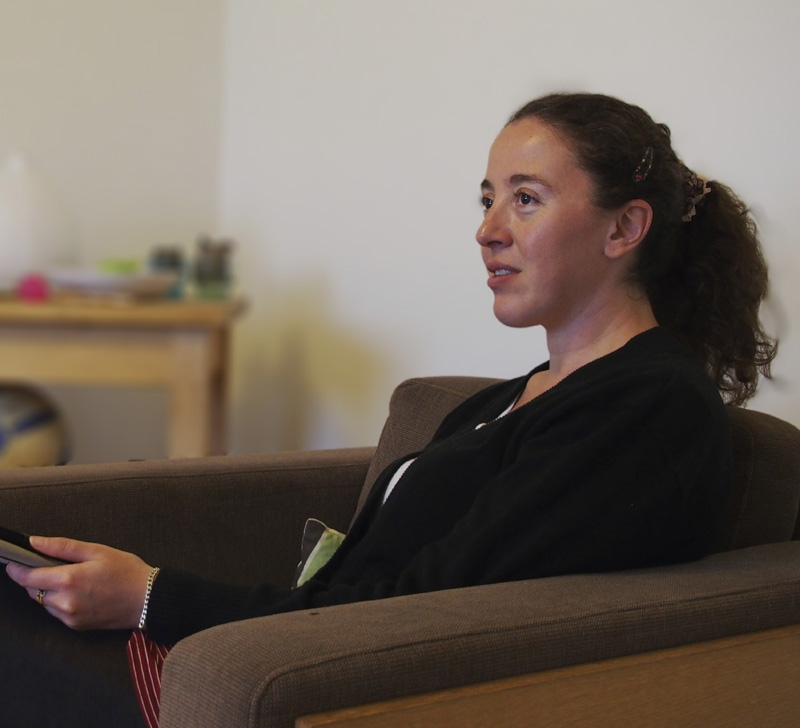
AW: How did you overcome it?
Drifa Benseghir: I did not stay. Of course, I stayed until the end of the project. The good thing about my job is that I always have a contract per project. When the project is finished it’s like “bye-bye”. We don’t have to stay if we don’t want to. In the beginning, I thought it’s very difficult because I was not self-confident and the new job was very stressful. But now I’m very happy like this. Nobody is really my boss. I’m like a Ronin (∗4), a Samurai without a master. I think “Ronin” is an old name for a freelancer. I kind of like it. Maybe there are more difficulties, but I don’t remember now. It’s not difficulty. It’s just like when I face this kind of atmosphere in a studio and a team. It’s not really productive and I feel like I’m in an army.
∗4: Ronin: When Samurai, people who was a warrior or the class of Bushi in Japan about more than 150 years ago, lost his lord to serve or the lord stripped the Samurai of his position, hence the Samurai was called a Ronin. Ronin has two means generally. Firstly, a Samurai who is seeking his new lord. Secondly, a Samurai who enjoys freedom by keeping not to serve any lord.
Working in Japan
AW: How did you get to work in Japan?
Drifa Benseghir: Through my friend. She told me that Polygon Pictures (∗5) were hiring for their next big project. It was Transformers: Prime (2010) at that time. It was an adaptation of the 2D Japanese animation series in the 1980s. At that time, they decided to do it in Japanese animation, but in 3D CGI. It’s for a TV series. It’s commissioned by an American TV called Hub. It was a really big project because 26 episodes has to be delivered in one year. They needed a big crew. Japanese programmers were not enough. They opened up positions for foreigners. I remember that ad was in a Japanese page. And then only a few weeks later, the English page was up. So first they searched people in Japan and they could not find enough people, so they searched the people in the world. I had just wrote. It was really fast and quick. I had a Skype meeting. They asked me the documents to do for my work permit visa. I think I had my Skype interview in May and I was in Denmark. I could send my documents for a visa only in July after I finished my work here. It took two months to get my work permit. I went to Japan in October 2010 and worked on Transformer: Prime TV series. It was a really great experience.
∗5: Polygon Pictures Inc. (http://www.ppi.co.jp) is the CG animation studio in Japan. Their works are such as Transformers: Prime (2010-), Tron: Uprising (2012-), and Knights of Sidonia (2014).
iCultural differences between Japan and Europei
AW: How is it like to work in Japan?
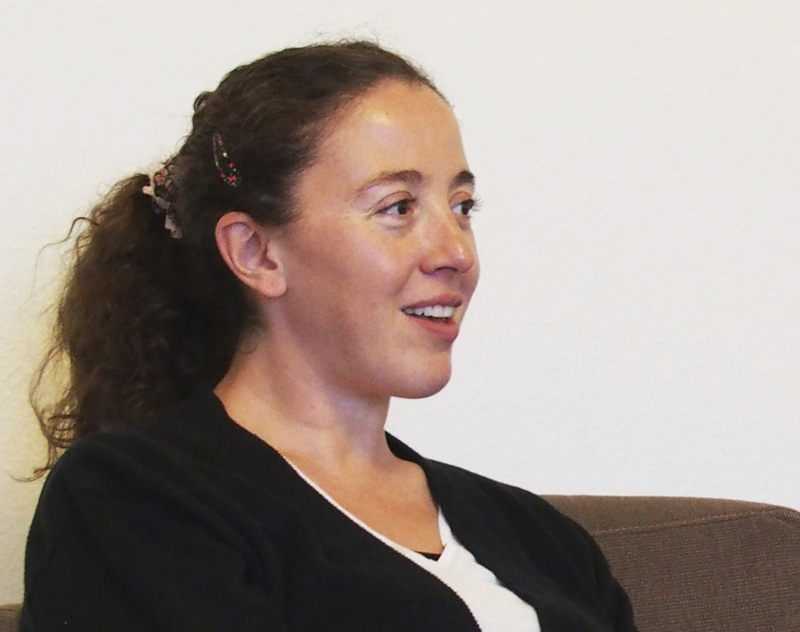
Drifa Benseghir: I was surprised by how serious it is. Compared to France, things like togetherness, sharing and playfulness, which I could experience, was almost not existing. I didn’t expect that. It was like this in every studio I worked, from the big studio like Polygon Pictures, to a small studio like Kanaban Graphics (∗6). It’s not the size of studio or the number of people. Culturally Japanese creators are not as wild as we can be in Europe. Not only in France, I worked in Denmark and Norway. We make jokes, play around and listen to music. In Japan, everyone is serious. In the beginning it was hard for me but I got used to it. I wish I could find the place with a little bit of balance between the calmness which is very good sometimes but also a little bit of friendship and playfulness. It was little bit too serious. I never worked in a bank, but I think it would be similar. It was kind of surprising and almost shocking, but I got used to it. All the foreigners were feeling the same. We were cheering up each other. It was a big surprise.
∗6: Kanaban Graphics (http://www.kanaban.com) is an animation studio in Japan. Their recent work is CG animation Usavich (2006-).
Meeting in Annecy led to the very special day
AW: Could you please share your memorable experiences in both Japan and in global projects?
Drifa Benseghir: It’s not really related to work. In 1999, in France, it was my third time to go to the Annecy International Animated Film Festival. It was big but not as big as today. Every year they have a cultural guest. In 1999 it was Japan. So there were a lot of Japanese guests: Koji Morimoto, Michael Arias, and Yasuo Otsuka. Since I spent 4 years in the “Langues’ O” university in Paris, I could speak Japanese. I was young and bold and went to talk to them like “Hey, Hello. I’ve seen your work. I think I know what you do. I really like your work … blah-blah-blah. Listen, I work in Paris in a small company. We do TV programs for kids. If you happened to be in Paris after the festival, please don’t hesitate to come and visit us”. And I gave my card to Morimoto-san. He was together with Michael Arias. They were presenting the very first draft of Tekkonkinkreet in 3D. It was in 3D, not in 2D. It was the very first test done in 3D in 1999. It was just a pilot to get funding. I also gave my card to Yasuo Otsuka-sensei. My friends were very impressed that I could speak Japanese. For me, it was normal because I learned Japanese for four years in university. That was my formal education. Me, I was impressed by the level of skills my friends and co-workers had in animation. You always want what you don’t have.
After the Annecy Festival, I almost forgot about this episode and I returned to my work in Paris. I remember it was in a company called Sparx∗ (∗7). One day, the production manager knocked at the door and said “Drifa, there are people waiting for you downstairs”. And it was Morimoto-san with his crew. Back then, my boss at Sparx∗, now created a very nice and cool company called TeamTO (∗8) in France, he was a big fan of anime. He was like “I know you, I know you” and he was very happy and impressed that very big masters came to his studio. They were like “yes, we came because Drifa invited us”. We had some tea and coffee in a super beautiful meeting room which is usually reserved for clients. My boss was super thrilled and happy, and the Japanese crew was very happy to visit an animation studio in Paris. I was very happy too because I created a bridge between those two worlds. A few days later Otsuka-sensei came as well. My boss was very happy because Otsuka-sensei did the animation direction of many episodes of Lupin the Third. He was so happy that he invited us, me and another co-worker, the Japanese crew, and Otsuka-sensei to the restaurant. It’s a little funny because he invited us to a Sushi restaurant. The Japanese crew did not say anything but their faces were saying that “we would love to go to Bistro or typical French place, why are we going to a Sushi restaurant??”. That was memorable. It was in June 1999.
∗7: Sparx∗ (http://www.sparx.com) is a 3D animation studio.
*8: TeamTO (http://www.teamto.com/en/) is an animation studio.
The Meeting with the biggest masters in Japan
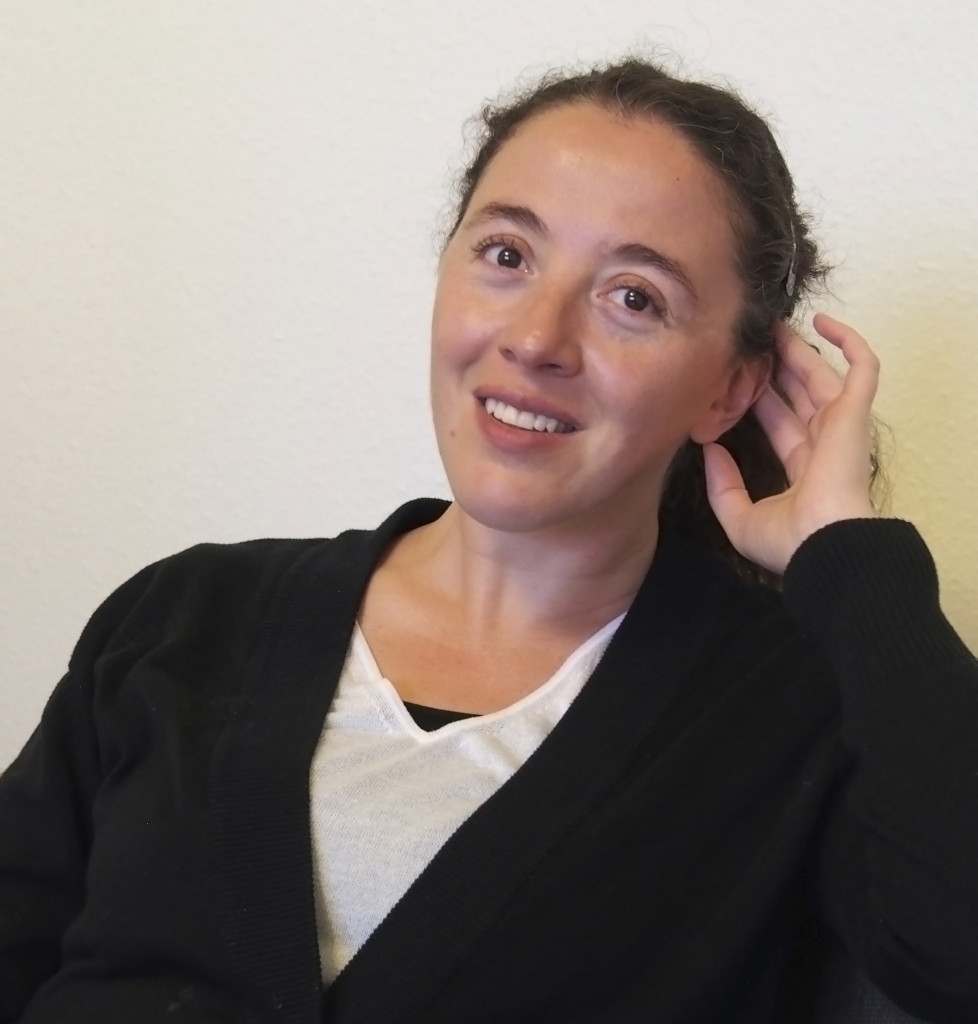
Drifa Benseghir: I thought this opportunity was great and that I should not let this die. In the same year at the end of the summer I had a break from work. I decided to go back to Japan for two weeks holidays and see all those people again. I had a feeling that I should not let this disappear. At that time I was so much into Japan. I was going to Japan as soon as I had time and money. I didn’t travel anywhere else in the world but Japan. When I met Otsuka-sensei, he made a call with his cell phone. It was impressive to see because it was still not common to have cell phones in France back then, especially with an elder person. He was pushing buttons on the cell phone, “pi pi pi”. I couldn’t fully understand what he was saying. After he finished his phone call, he said “I called Studio Ghibli. You can go there today if you want. They are waiting for you to give you a tour”. Because of Otsuka-sensei I could visit Ghibli. He said “I don’t know if Miyazaiki is now in the studio or not”. I think they were working on Chihiro (∗9), or it was maybe a short movie for Ghibli museum (*10) because I clearly remember seeing images of the “Chibi Nekobus” on a table. But I couldn’t understand what it was.
∗9: Chihiro stands for Sen to Chihiro no Kamikakushi, the original Japanese title of Spirited Away (2001).
*10: Ghibli museum (http://www.ghibli-museum.jp/en/) located in Mitaka, Tokyo.
Drifa Benseghir: Before going to Japan, I bought two bottles of wine from France. They were supposed to be for Otsuka-sensei. When I was about to give these two bottles to Otsuka-sensei, he said “Keep one and give it to Miyazaki. If he’s not there, leave it in the studio”. When I arrived, Hayao Miyazaki was there. I was super super impressed and humble. I almost could not speak. I had a big smile and there’s nothing I could say when he was in front of me. Anything I could say sounds stupid. I just said “Thank you so much for having me. I hope I didn’t disturb them. This is from France. Please enjoy”. That’s all. He said “Thank you” and went to his desk and took a Shikishi (∗11). He drew me a picture of Totoro and said “Thank you”. It has been my treasure since then.
∗11: “Shikishi” indicates a thick and high quality white paper in Japan. Its shape is generally square. When Japanese Manga or animation artists draw an illustration with a signature as a gift, they normally use Shikishi.
Drifa Benseghir: I had a tour, I could see the desks. I was super impressed by the desk of a guy who was doing backgrounds. I couldn’t take pictures but it’s OK, everything is clearly in my memory. I remember that day very clearly. It was the 3rd September 1999. It was the best day in my life. It was like I was walking on clouds. Maybe for Hayao Miyazaki, it was like another “gaijin” visiting the studio. I heard that he never gives his drawing but only for girls and non-Japanese. I was non-Japanese and a girl. Everybody was saying like “can you imagine how special this is? He never gives out signs or giveaways”. I was very honoured.
I’m not sure how I ended up visiting STUDIO4℃ (∗12) but I was able to visit STUDIO4℃ and met Morimoto-san. I didn’t have a bottle of wine to give him. He gave me a Shikishi anyway. On the same day, I met three of the biggest masters for me. Since then, it never happened. It’s kind of a magic that I never forget. It was just amazing. It was not work. It was because I met them at the Annecy International Animated Film Festival. I think it’s a big coincidence. That’s a very memorable thing. This is very personal. I don’t know if this can happen again. It was very amazing.
∗12: STUDIO4℃ Co.,Ltd. (http://www.studio4c.co.jp/english/) is an animation studio in Japan. Their works include MEMORIES (1995), Spriggan (1998), The Animatrix (2003), Mind Game (2004), Tekkonkinkreet (2006), and a music video for Ken Ishii’s EXTRA (1996).
AW: Thank you for sharing your precious memory with us. Do you have any memorable things at work?
Drifa Benseghir: Yes, I remember. It was in 2007 or 2008. I finished a project. I was on a break. I was waiting for the next project. I got a call from a company because I was recommended by my previous students from Gobelins, from my first class. My students said “it would be great to have Drifa as our supervisor” . It was actually for French-Japanese collaboration with MADHOUSE (∗13) for a Japanese animation director Rintaro’s movie, Yona Yona Penguin (2009).
∗13: MADHOUSE Inc. (http://www.madhouse.co.jp) is one of the oldest animation studios in Japan. This studio is famous for Satoshi Kon’s works Perfect Blue (1997), Millennium Actress (2002), Tokyo Godfathers (2003), Paranoia Agent (2004), and Paprika (2006).
I just went for the interview and they decided to hire me immediately. They had a supervisor for the animation but he had a Disney or American like style. They always got retakes from Japan because the animation was “too smooth”. What an irony. They wanted something more like an “Anime” (∗14) style like pose to pose. So the previous supervisor said “I don’t understand the demands of the Japanese”. They called me and I said “I understand, this means Japanese style. I think I can do it”. They said “that’s great, you’re in. There’s a meeting next Saturday with Rintaro. He is coming from Japan with the whole team”. I went to the meeting and I started to speak in Japanese with some of the Japanese team to present myself. All the French crew was like “What!? You speak Japanese?”. The people who hired me actually didn’t know that I could speak Japanese. It was a good surprise. It was a good memory. When we were exchanging Meishi (∗15), all my French collaborators were so surprised, you could read it on their faces.
∗14: According to Wikipedia (https://en.wikipedia.org/wiki/Anime), “Anime” is a term used to refer to Japanese animated productions featuring hand-drawn or computer animation.
∗15: In Japanese, business card is called “Meishi” and the Japanese have a unique business custom when they exchange Meishi.
Future plan
Cultural exchange between European and Japanese creators
AW: What is your hope or plan for future?
Drifa Benseghir: We were talking about it with some co-workers. It’d be great if Japanese creators, like animators, modellers, background artists, every creative person in this industry who would like to experience European culture, could come to Europe and have a cultural experience. Let’s say a Japanese artist who wants to experience European culture. I talk about Europe because I don’t know much about America or Canada. If there is a studio in Europe, maybe in France or Denmark, or in the UK, that were created by half Japanese and half European creators, there would be a direct communication. They could come to Europe even they don’t speak the language and they could feel comfortable. It would be great for them. And we have the same for Europe in Japan. One studio in Japan would be global. People are coming from different countries and they are choosing the projects. Anybody who would go there would not have a problem of a language or be totally lost in translation.

I think that the demand is there. People would like to exchange and discover all the countries. If you go somewhere, you don’t feel alone. It would be super helpful. For example, if you come here in Denmark, I’m here to show you around.
AW: Yes, it was really helpful.
A dedicated team for helping creators to settle would be ideal
Drifa Benseghir: If you go to Japan then someone is there to help you with everything. Actually, in Polygon Pictures, there was a good department that was taking really good care of foreigners. There was like a two hour introduction to the company and explaining major aspects of Japanese culture and society. It is the only one company who does that. This was really good. When I arrived in Japan, I worked for Polygon Pictures first. So it never felt like a foreign country anymore. It was like going to my second home. A lot of the foreigners that arrived in Japan felt so lost. There could be an organisation that could help. If you don’t know where to sleep next week or how you go to the registration office, you can’t really work and can’t give your best. They can’t get to that zone of flow. You worry all the time. It makes the start very hard. If they could be relived from that, it would be so much helpful.
If this could exist in Europe, this could help the Italian and Spanish as well. I know a lot of Italian and Spanish people coming to Paris to work for big studios and they are totally lost. I think it’s really sad. It would be cool if there is a special department in the company for foreigners who come from abroad or anywhere. If this were to exist, exchanging would be much easier. If the work permit is easy to get, for example anybody under 30 years old can get a working holiday visa, it would be nice, especially in animation, if it could be up to 60 years old. Maybe one day, I don’t know. It would be great if administration is taken care of. It’s OK you can’t speak the language in the beginning because it will just come. At least you don’t feel like you are going to the dark woods. Now we have a lot of co-production in Europe. It’d be great if there is more co-production between Japan and Europe. Japanese culture is extremely fascinating.
Advice for young talents
“Follow your bliss” and “Don’t stay in your comfort zone”
AW: Do you have any general advice for those who want to work for animations?
Drifa Benseghir: Follow your bliss. It will work. Don’t try to work for one big studio for all your life. It’s better to get many different experiences in different studios and meet a lot of different people. Don’t be scared to change. For me it was a really, extremely valuable learning experience. To be honest, I thought I would stay for all my life when I was hired by Ubisoft®. When they told me that the project was over and it’s okay we don’t need you any more, I was quite sad and devastated. I was like “No! I have to look for a job again”. For the first five years I thought it was very unfair, to be honest.
I had no choice. I moved forward. I found new studios. It was not easy all the time. I had to adapt each time to the new team and new projects. I didn’t know back then but I really develop my capacity of adaptation. It is a great quality. It’s only a few years later I realised it when I went back to Ubisoft®. They called me back for a project. I was together in a team with somebody who never left. For me it was surprising to see that I had evolved so much in two years going here and there and having to do my best to stay in the game, I had to always learn new things and adapt each time even though it was not comfortable.
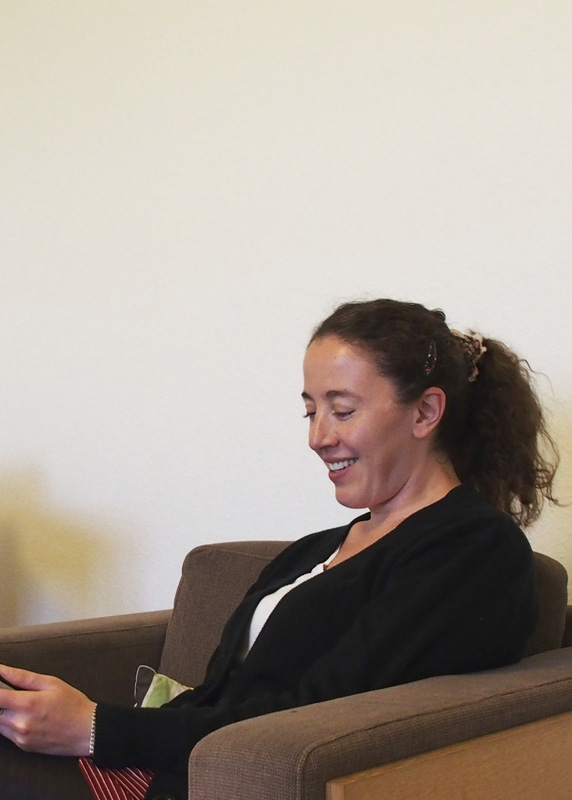
I didn’t notice how much I evolved. It’s only after I came back to work again with the people who were comfortable for two years and I saw how much I learned and how much they didn’t change. I thought to myself that it’s good that they didn’t keep me because now I’m much stronger, I know so much more and I have so much more experience. This is when I realized it was a good thing. Two years earlier I was like “oh no! they didn’t keep me” but then I could think ahead and understand how good it was for my personal growth.
A general advice would be to not stay in your comfort zone. It will not be helpful. Follow your bliss. If you don’t feel good on a project, if you don’t feel like you are in the state of pure happiness, just move on … don’t stay because you are afraid or feel insecure. It’s really hard because you are going into the unknown. ”What doesn’t kill you makes you stronger”.




